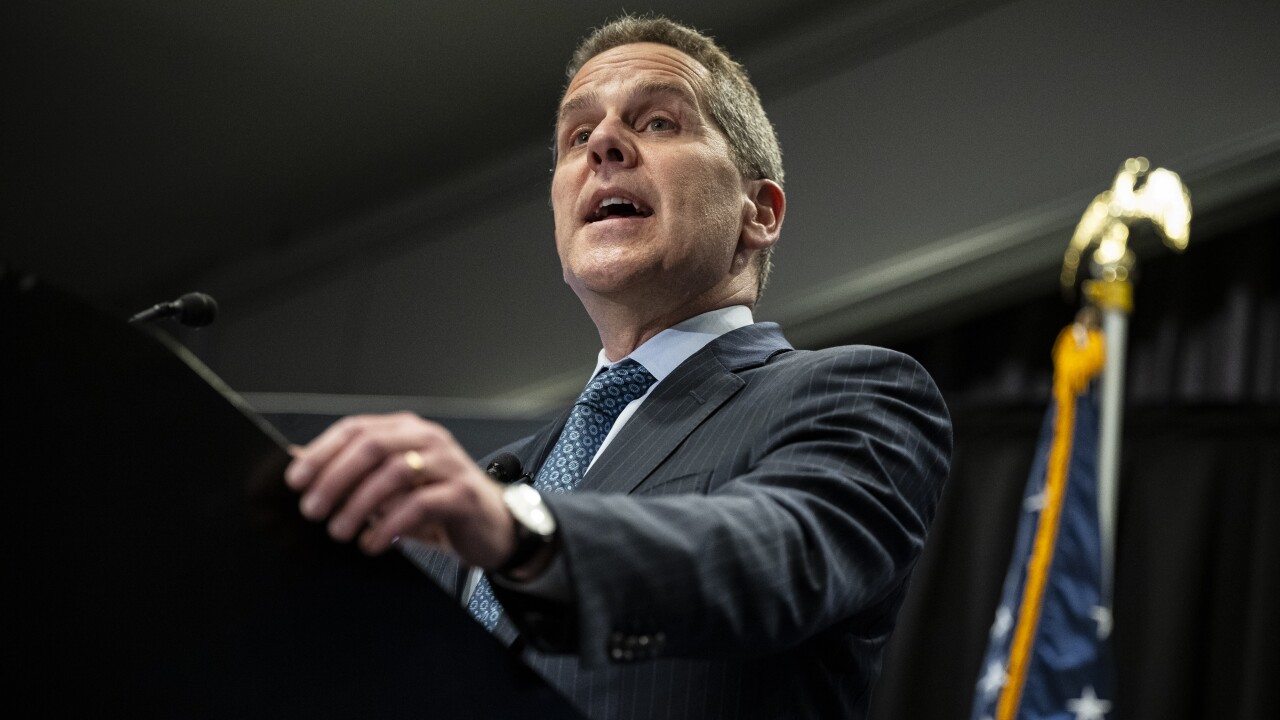-
At the bailout law's three-year anniversary, the Small Business Lending Fund has offered some banks a way out. But with that escape hatch now closed, roughly 400 small banks remain stuck in the program.
September 29 -
The Treasury Department announced the last group of banks that will receive capital under the Small Business Lending Fund, which distributed more than $4 billion to 332 banks, falling far short of industry expectations.
September 28
WASHINGTON — Treasury Secretary Timothy Geithner faced sharp criticism from senators on Tuesday over a disappointing capital-injection program that ultimately awarded only 14% of the funds it was designed to provide to small banks.
The harshest assessments came from Republicans, but several Democrats also criticized the program's slow roll-out, noting that it took nine months for the Treasury Department to make the first funds available to small banks under the Small Business Lending Fund.
Geithner blamed the program's smaller-than-expected impact on a combination of low demand by small banks and the fact that half of all applicants were not deemed healthy enough to qualify.
"What Congress authorized was a $30 billion program," Geithner told members of the Senate Small Business Committee. "Now, banks applied for only one-third of the capital in the program. We can't force banks to come. We made a major effort, alongside many of you, to make sure banks were aware of it."
"Now why were only half eligible? They were only eligible because we had to be careful to make sure that taxpayer resources were going to banks that were viable," he continued.
But Sen. Olympia Snowe, R-Maine, said Geithner should have expected such a situation.
"Mr. Secretary, you should have known that to begin with," she said.
The Small Business Lending Fund, which was enacted a year ago, provided funds to small banks with the goal of encouraging bank lending to small businesses. When participating banks meet certain thresholds for small-business lending, they pay lower dividend rates on the government capital.
By the time the program finished allocating funds last month, it provided $4.2 billion to 332 financial institutions. About 40% of the recipients used some or all of the funds to refinance capital they received under the Troubled Asset Relief Program.
Besides the SBLF's slow pace and limited impact, the Treasury Department has faced criticism for failing to share with rejected applicants the reasons they were turned down for funding.
Geithner announced at Tuesday's hearing that Treasury has now developed a way to share those reasons with rejected banks in a way that does not jeopardize confidential supervisory information.
But this was not enough to mollify critics, even among Democrats who supported the program's creation.
"I think a lot of people are frustrated," said Sen. Maria Cantwell, D-Wash. "They think that the big banks basically got access to capital in about 10 seconds. And it has taken nearly 10 months for these small businesses to get access through community banks."
Geithner said that he, too, is frustrated by the amount of time it took to provide capital to participating banks. Under the program, it was up to bank supervisors to determine whether applicants were viable and eligible.
"It took them a long time to do that," Geithner said. "I don't know a different way to do it."
Republicans on the committee called on the Obama administration to cut regulations and reform the tax code as ways to spur economic growth at a time when the U.S. unemployment rate is 9.1%.
"In reality, we wasted an entire nine months on this program, nine months before a single dollar was distributed," Snowe said. "The bottom line is, I'm deeply concerned that this administration's failed to create the kind of conditions that are warranted in these urgent times."
But Sen. Carl Levin, D-Mich., noted that Senate Republicans filibustered the legislation that created the Small Business Lending Fund. In light of that fact, he suggested that Republican complaints about the program's slow implementation ring hollow.
"It's amazing to me now to hear the complaint that one part of this bill, at least, is not being implemented fast enough, where if the Republicans had their way, it wouldn't have been on the books at all," Levin said.
Republicans also hammered away at the fact that a great deal of the SBLF's funding was used to allow banks to repay their Tarp funds. But Geithner rebutted those criticisms by noting that Congress specifically designed the program to allow such repayments.
"That was the intent of the architects of the bill," Geithner said.
Although the program's impact will be more limited than its authors hoped, the Congressional Budget Office has estimated that it will generate a positive return for taxpayers.
Small Business Committee Chairman Mary Landrieu said that she intends to use Geithner's testimony, along with input from banks and small businesses, to develop a new version of the Small Business Lending Fund.
Geithner indicated that he would support such an effort, saying that every dollar of capital the government provides to a bank that can't get capital elsewhere supports between $8 and $10 of lending capacity.
"I am a big supporter of these programs," he said.





